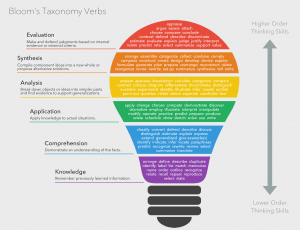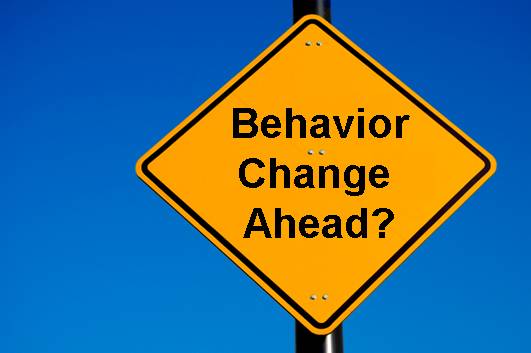By Sue Iannone
For any learning and development (L&D) program, training managers and directors will create learning objectives. These objectives articulate the discreet things that learners should be able to do after participating in a program. Learning objectives are extremely important, but they’re only part of the story.
Ultimately, L&D efforts are about driving behavior change in the field, so behavioral objectives are just as important. Unfortunately, learning professionals often fail to develop behavioral objectives. In this article, we describe the differences between learning objectives and behavioral objectives. We also explain how they should work together to drive business results.
Learning Objectives
As mentioned above, learning objectives articulate the key things that learners should be able to do after completing a given training program or learning experience. L&D professionals usually take great care to properly write these objectives for a given learning resource or training course, as well as for units within a course
Each learning objective relates to a specific capability or skill and is expressed using an action verb. For example, after completing a course, learners should be able to:
- Describe the mechanisms that underlie disease X
- List common treatments for disease X
- Articulate the mechanism of action for drug Y
- Handle the most common customer objection to prescribing drug Y.
Learning objectives can relate to “lower order” (e.g., knowledge-based) thinking skills as well as higher-order (e.g., evaluation-based) thinking skills. L&D professionals the world over are familiar with Bloom’s Taxonomy, which arranges the “action verbs” for learning objectives into various levels, from lower-order to higher-order. Figure 1 shows this taxonomy.

Behavioral Objectives
Behavioral objectives articulate the specific behaviors that learners are supposed to exhibit in the field after completing a training program. To perform a desired behavior, a learner might need to absorb and master numerous individual pieces of knowledge and multiple skills. So, while a single behavioral objective might have only one or two learning objectives, a behavioral objective may often have many discreet learning objectives embedded within it. Another way to look at it is this: Behavioral objectives can focus at the “macro” level while learning objectives focus at the “micro” level.
Putting it All Together
Ultimately, we create training programs and learning experiences because we need to achieve some business result. If you find yourself getting hyper-focused on only the learning objectives, it may be time to take a step back and ask yourself: What is the business objective which needs to be met? What are the associated behaviors required to meet this business objective? To guide program development, L&D pros must:
- Articulate the desired business result(s).
- Determine which behaviors will deliver the desired business results, then develop the behavioral objectives.
- Develop discreet learning objectives for each behavioral objective.
Below is a hypothetical example of how these three components relate to one another. Note that multiple desired behaviors might be needed to achieve the business result. We have limited it to one desired behavior in each example, just to keep it simple.
Desired Business Result: Increase the number of “product X” prescriptions written for new patients.
For Sales Representatives:
- Desired Behavior 1: Articulate the unmet need for patients suffering from disease Y to healthcare providers.
- Learning Objectives for Behavior 1: List the hallmarks of disease Y; Describe the burden of disease for patients suffering from disease Y; Relate patient dissatisfaction with current treatment options
For Field Reimbursement Managers:
- Desired Behavior 1: Remove reimbursement barriers that may impact a new patient’s ability to access product X.
- Learning Objectives for Behavior 1: Identify the most common access challenges encountered by new patients and office staff; Recognize common problems related to billing and coding; Recognize common problems related to prior authorizations; Describe the fulfillment pathway for product X
From all this, one thing becomes crystal clear: Learning objectives are important, but they may be only part of the story. They are a vital component in a cascade of things that begins with the desired business result(s), moves through the behavioral and learning objectives, and then culminates in effective program design. All learning professionals create learning objectives, but the BEST learning professionals consider the business need and the desired behaviors. Adopting this approach is one key to becoming a true performance consultant!


